The Key to Tesla's First-Quarter Output Goal Is Still in Germany
This article by Dana Hull for Bloomberg may be of interest to subscribers. Here is a section:
Tesla Inc. has all the tools to meet its planned Model 3 production rate in the first quarter. The only problem is they’re still in Germany.
The electric-car maker -- which is still targeting about 2,500 of the cars a week by the end of March -- has designed a new automated system for module production for its battery factory near Reno, Nevada. The line’s already working at its German Grohmann unit but it needs to be shipped to the U.S. next month before it can go into use, Chief Executive Officer Elon Musk said.
“That’s got to be disassembled, brought over to the Gigafactory, and re-assembled and then brought into operation at the Gigafactory. It’s not a question of whether it works or not. It’s just a question of disassembly, transport and reassembly,” he said on a conference call Wednesday. Once that milestone’s completed, Tesla will next need to fix material handling constraints at its Fremont, California, assembly plant before it can reach its 5,000-a-week goal by the end of June.
Tesla -- which has pushed back its Model 3 production targets several times -- is banking on the more affordable model to propel it from niche electric-car maker to mass-market manufacturer. The slower ramp means less money is coming in the door from customers taking delivery, and Wall Street is watching closely for any signs the targets could slip again.
The launch of the SpaceX super heavy rocket was delayed on multiple occasions but suddenly everything seemed to go right ahead of the earnings announcement the day after. I don’t think I’m the only one who doesn’t see this as a coincidence. Tesla is attempting to build a world class heavy manufacturing centre from scratch which is no simple task and in doing so faced much greater competition than SpaceX does in launching rockets.
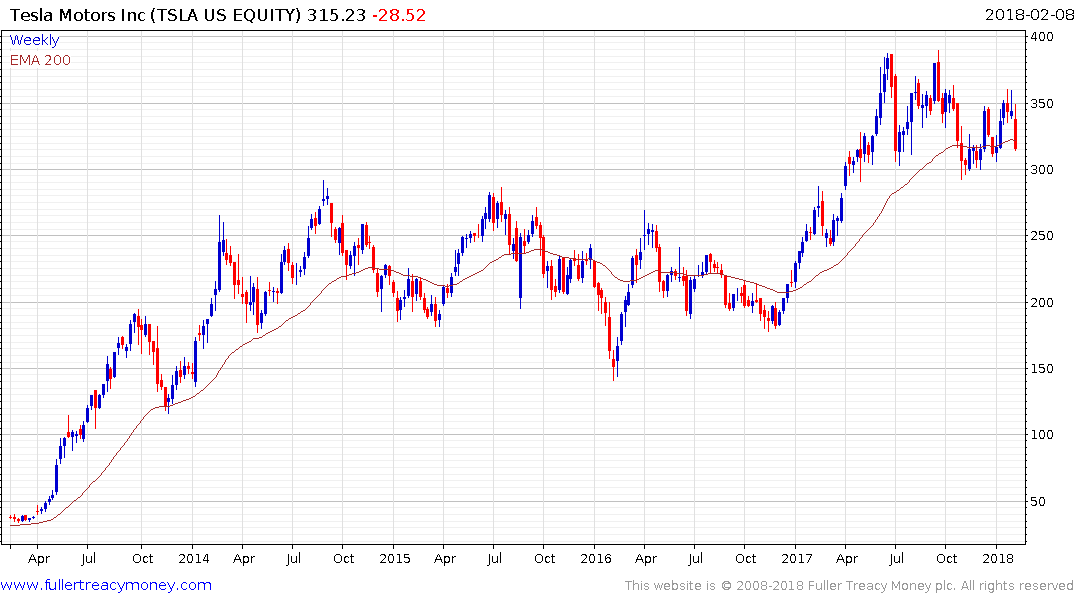
The share is a B- rated credit which gives us a clue to how much risk is attached to Elon Musk’s ambitions. The reason this master marketer has been afforded such largesse by the market is because Tesla’s cars are desirable and fashionable but mostly because interest rates are still low and credit abundant.
The biggest challenge for high yield issuers dependent on access to liquidity to fund operations is when they have to refinance or seek new funding. Then the prevailing interest rates represent headwinds. Right now, Tesla has about $3.3 billion in cash, negative cash flows and $10 billion in outstanding debt. It is worth remembering that the deposits taken in the for the model 3 are included in the company’s cash.
The share has been trading above the psychological $300 area for most of the last year and is now back testing the region of the trend mean. I regard Tesla and other high yield issuers with negative earnings as canary’s in the coal mine for the credit fueled portion of the market. A break below $300 would represent a signal credit conditions are tightening up.
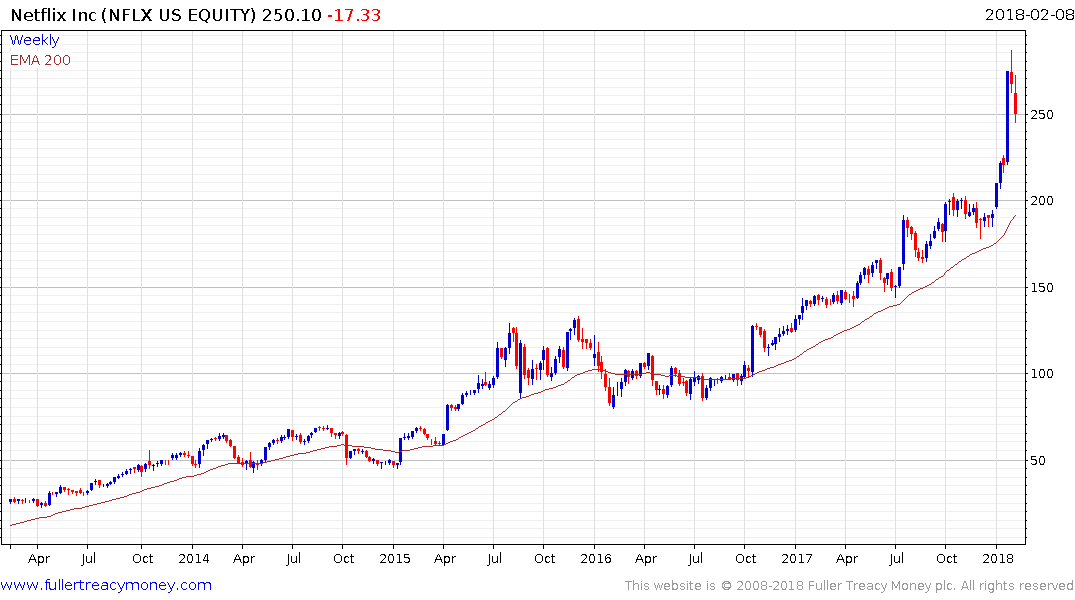
Netflix is a B+ rated credit and trades on an estimated year end P/E of 96. The company has a great product but is currently 34.6% overextended relative to the trend mean and this is after the pullback seen last week. It is reasonable to conclude that a lot of good news is already in the price.
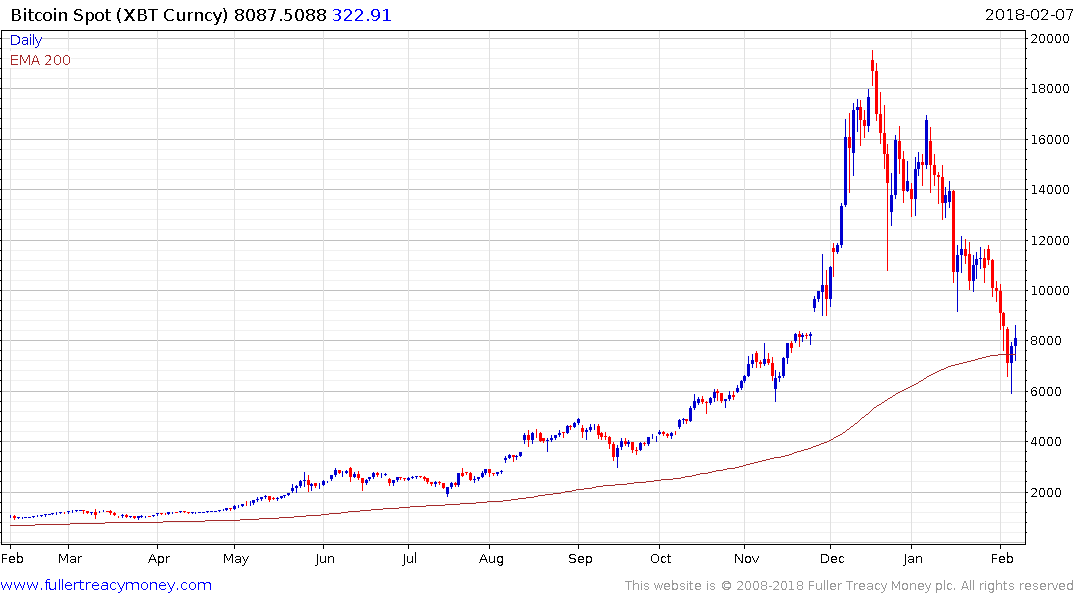
Credit card companies are no longer processing payments in the cryptocurrencies. This move was announced last week. My guess is that a lot of the people who were buying after the Thanksgiving Day holiday got their credit card statements in December and January and decided to let the debt ride rather than pay it off. Credit card delinquencies are reported monthly with a one-month lag and will next be updated at the end of this month. A rally in the 30+ days figure at the next update could well be associated with the crash in cryptocurrencies.
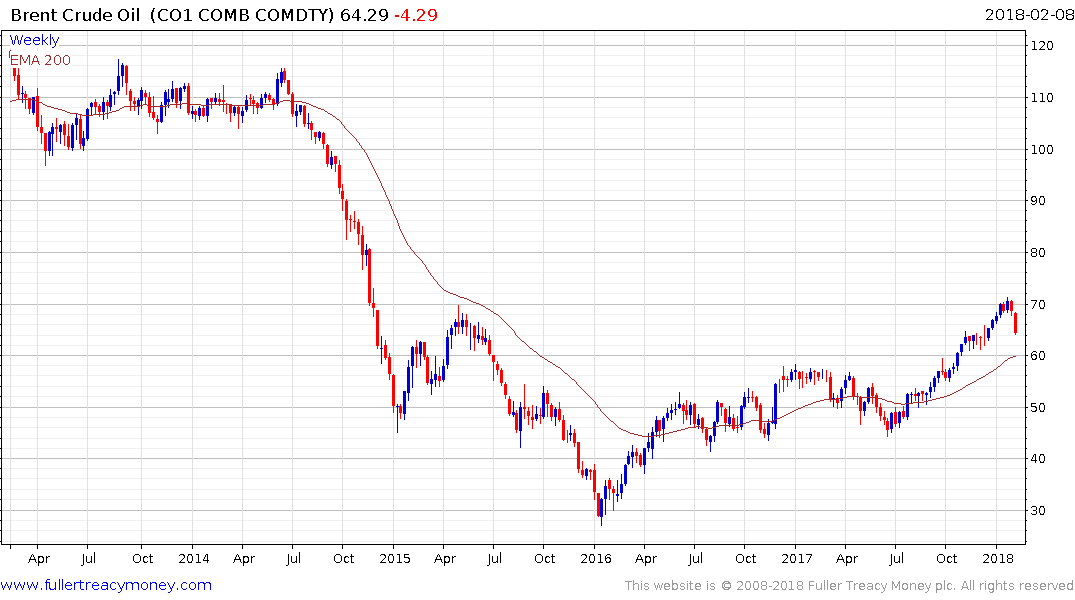
High yield debt issuance has been dominated by energy issuers so far this year. With oil prices at levels not seen since at least 2015 it was a good time to issue new debt. However, Brent crude is now testing the $65 area and need to find support soon if the seven-month uptrend is to be given the benefit of doubt. Medium-term the trend mean is currently near $60.
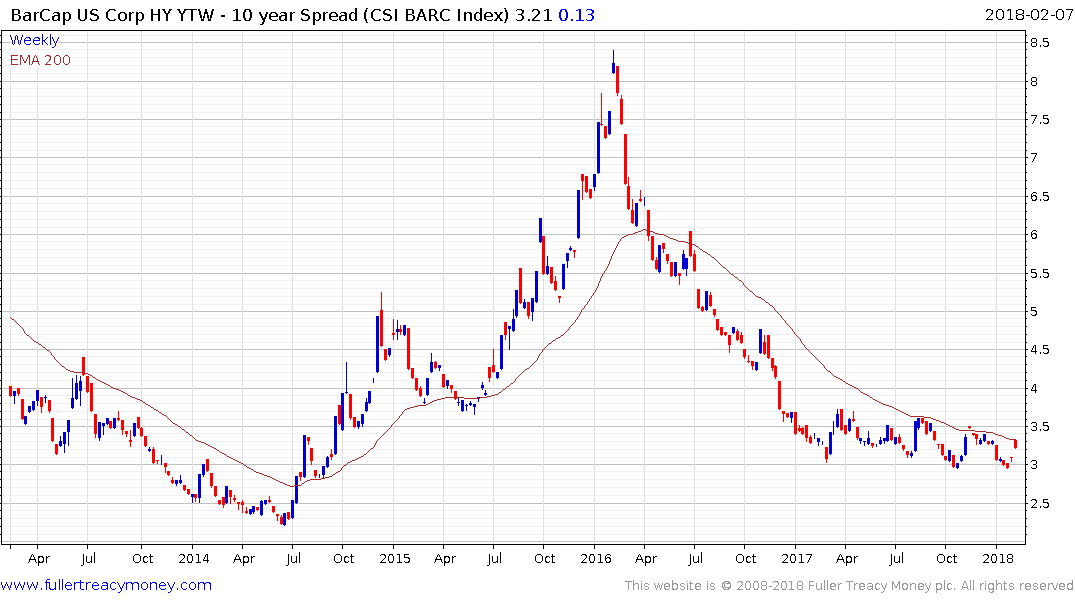
.png)
So far High yield spreads have been not moved suggesting little stress on the balance sheets of oil producers so the extent to which prices hold the $60 is likely to have bearing how credit spreads later this year.
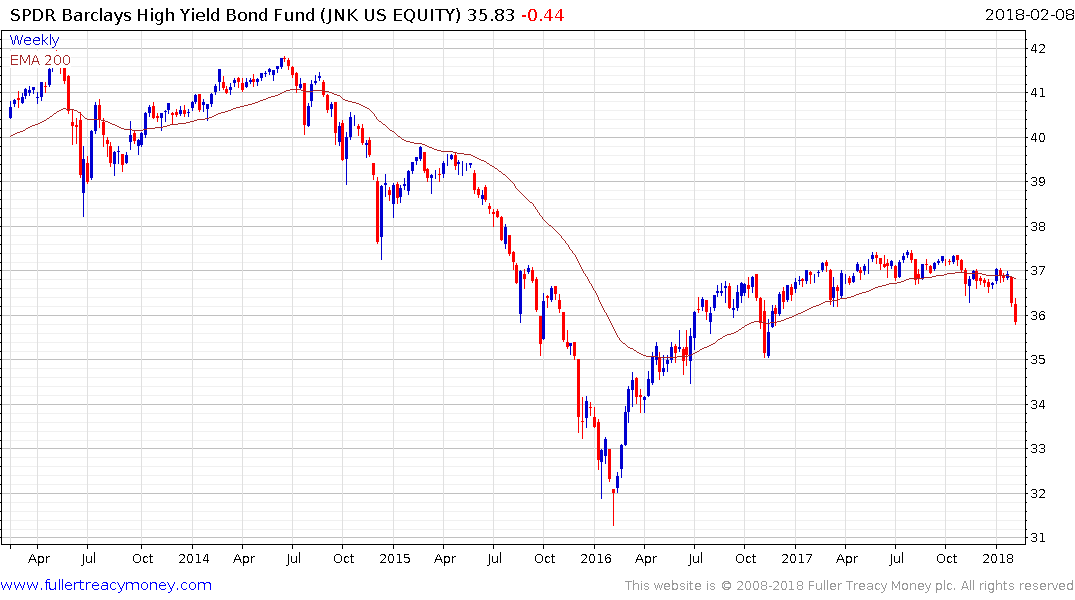
However, the SPDR Bloomberg Barclay’s High Yield Bond ETF is rolling over and moved to a new reaction low today.


